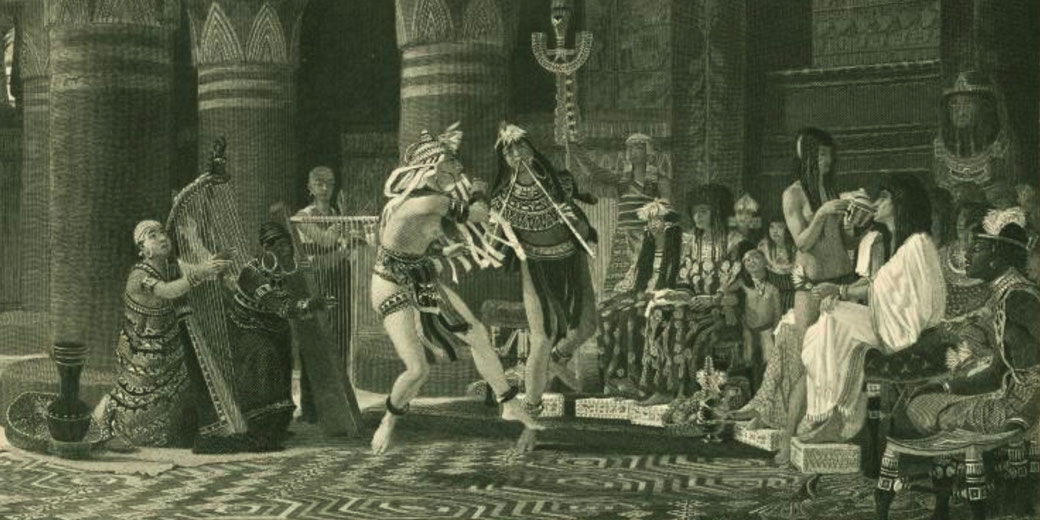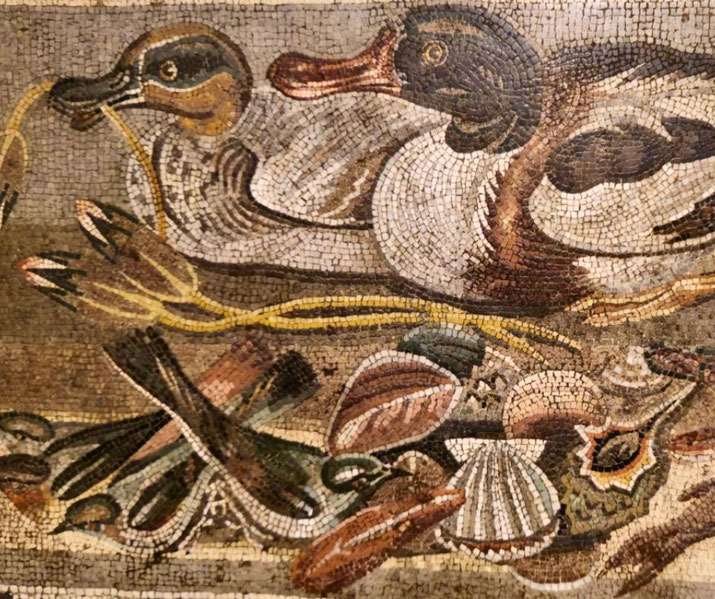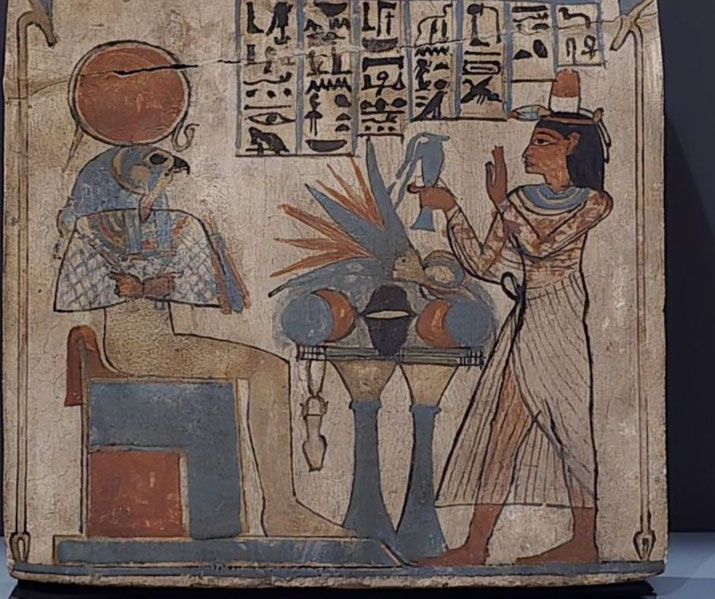What was daily life like in Ancient Egypt?

A child in a reed hut might wake to the scent of baking bread and the rhythm of the Nile’s flow, while a craftsman who worked nearby and carved alabaster into offerings for the gods might mutter under his breath as he worked on another statue of the gods.
Religion, social class and location all played important parts in creating Egyptian society’s values and impacted everyday life in a variety of interesting ways.
But, what would it have been like to live in ancient Egypt?
Family Life and Gender Roles
Family life was very important in ancient Egyptian society, and the nuclear family was the main social group.
Usually, marriage was arranged between families, but people sometimes had some kind of say in who their spouse would be.
Having one spouse (whether a husband or wife) was normal, but richer officials and royals could have multiple wives or concubines if they wanted.
Then, when couples had children, parents were responsible for teaching right and wrong, discipline, and religious beliefs.

After you were born, gender roles in ancient Egypt were fairly clear, yet they were more flexible than in many other ancient societies.
Men were mostly responsible for working outside the home and engaged in farming, crafts or trade.
They also held most positions of power, including roles as government officials and military officers.
Women, by comparison, had a fairly high level of independence and legal rights.
They could own property, conduct business, and even act as witnesses in legal matters.
However, their primary role centered around the household. Evidence does how, though, that women could also work as merchants, weavers or hold positions in temples as priestesses.
In fact, some elite women received formal education and could become scribes or physicians.
Education and Learning
Formal education was mainly available to children of the wealthy elite. It is believed that less than 5 per cent of the population could read and write.
Elite boys went to scribal schools where they learned reading, writing and mathematics. These skills were important for jobs in the pharaoh’s government.
As you probably know, the primary writing system in ancient Egypt was hieroglyphs, which combined logographic, syllabic and alphabetic elements.
Those that knew how to write, known as the scribes, held a respected place in society, as their skill in reading and writing allowed them to record religious texts, official records and literary works for important people.
Because of their training, they often had high status and could advance within the administration or priesthood.
However, most unschooled children from poorer families learned within their homes or through apprenticeships.
Boys typically learned their father’s occupation, such as farming, pottery or carpentry, by watching and helping with daily tasks.
These skills were therefore passed down from generation to generation.
Girls were usually taught household skills by their mothers. They learned cooking, weaving and other domestic tasks necessary for managing a household and raising a family.
In some cases, girls from wealthier families might receive a basic education in reading and writing, although this was relatively rare.
Food and Cuisine
Farming provided many crops that made up the Egyptian diet and formed the foundation of the economy.
The primary staple food in ancient Egypt was bread, which was made from emmer wheat or barley.
At every meal people ate loaves of bread, and it could come in different shapes and sizes. Sometimes it was even sweetened with honey or dates.
Another important staple was barley beer, which people of all ages and social classes apparently drank.
People viewed it as both a source of nutrients and a refreshing drink. It is important to note that it contained a much lower alcohol content than modern varieties.
Because the Nile’s fertile floodplains allowed for growing many vegetables and fruits, Egyptians also often ate onions, garlic, leeks, cucumbers and lettuce.
Fruits such as dates, figs, grapes and pomegranates were enjoyed fresh, dried or used in cooking to add flavour and sweetness.

The main protein in the ancient Egyptian diet primarily came from fish and poultry.
Since the Nile teemed with fish, it was readily available for meals. Meanwhile, poultry such as ducks and geese were raised at home.
On rare occasions, they would also eat meat from cattle, sheep and goats, although that was often reserved for religious festivals or wealthy Egyptians because it was relatively expensive.
If Egyptians did not have the money to afford meat, they relied on pulses such as lentils, chickpeas and fava beans. Regardless of social class, these were an essential part of the diet.
Meanwhile, dairy products such as milk, cheese and butter were consumed by both adults and children, but they were not as significant in the diet as other food sources.
In comparison to today, ancient Egyptian cooking was simple, with dishes seasoned using herbs, oils and spices such as coriander and cumin.
This food was usually cooked over open fires or in clay ovens and could be baked, boiled or grilled.
Clothing and Fashion
Because clothing and fashion in ancient Egypt adapted to the region’s hot and dry climate, the principal material used for clothing was linen.
Linen was ideal because it was lightweight and breathable, making it very comfortable in the warm Egyptian weather.
For poorer Egyptians, clothing was fairly basic: men typically wore loincloths or short kilts, while women wore simple sheath dresses called kalasiris, which were supported by straps over the shoulders.
Garments like these were usually made from undyed linen, natural pale cream or beige in colour.
The clothing of the poorer social classes was often coarse to the touch, since it was less finely woven than that of wealthier individuals.
Upper-class Egyptians, which included the royalty, officials and priests, wore more elaborate and well-crafted garments.
Men’s kilts could include pleats, fringes or decorative details. Women’s dresses might be more fitted, featuring detailed pleating, beading or embroidery.
They were often made from finer linen and could be dyed in a variety of bright colours.
However, white appears to still have remained the most common colour choice.
Interestingly, fashion accessories also played a regular part in ancient Egyptian fashion.
Both men and women wore decorative collars called wesekhs, which were crafted from beads or precious metals, and were often adorned with semi-precious stones.
Jewellery such as bracelets, anklets and rings was fashioned from gold, silver and gemstones to display wealth and status.

What about footwear? It appears to have been relatively uncommon among poorer Egyptians, who usually went barefoot.
However, the upper classes and those in formal or ceremonial roles might wear sandals made from leather, papyrus or palm fibres.
That brings us onto hairstyles. Both men and women, particularly from the upper classes, often shaved their heads and wore wigs that were constructed from human hair, sheep’s wool or plant fibres.
Such wigs could be arranged in braids, curls or intricate updos, as each individual preferred.
Music and Entertainment
Just like us, music and dance were central to ancient Egyptian life and, as such, they featured prominently in religious rituals, festivals and celebrations throughout the year.
We know this because tomb art depicts musicians who played instruments such as harps, lyres, flutes, percussion instruments and sistra, a type of rattle.
Accompanying these musicians were singers and chanters. Dancers performed both in groups and as soloists, and, according to surviving artwork, the performers’ movements were shown as quite dramatic and even acrobatic.
In these images, both men and women participated, although certain roles and performances seem to be specific to each gender.
Finally, entertainment in ancient Egypt also included sports. Specifically, Egyptians swam in the Nile, rowed boats and engaged in hunting and fishing, while board games provided further diversion.
Two known games are Senet and Mehen, which were played by both adults and children.
What do you need help with?
Download ready-to-use digital learning resources
Copyright © History Skills 2014-2025.
Contact via email
With the exception of links to external sites, some historical sources and extracts from specific publications, all content on this website is copyrighted by History Skills. This content may not be copied, republished or redistributed without written permission from the website creator. Please use the Contact page to obtain relevant permission.





